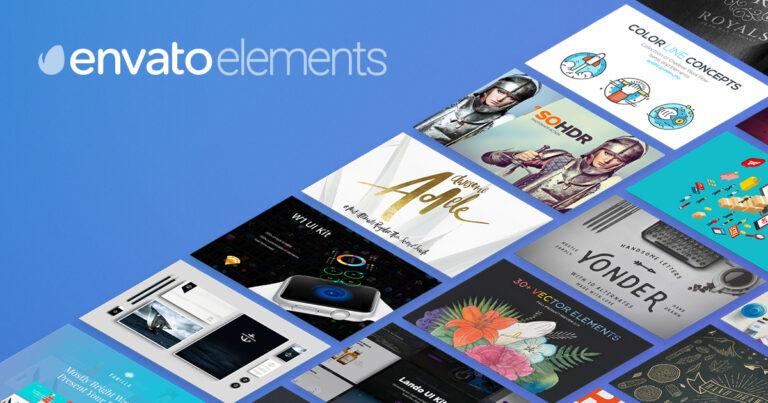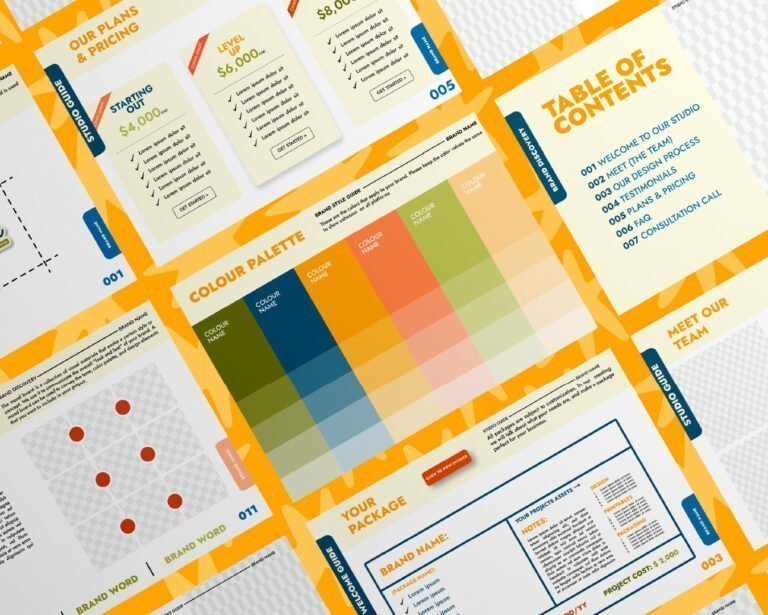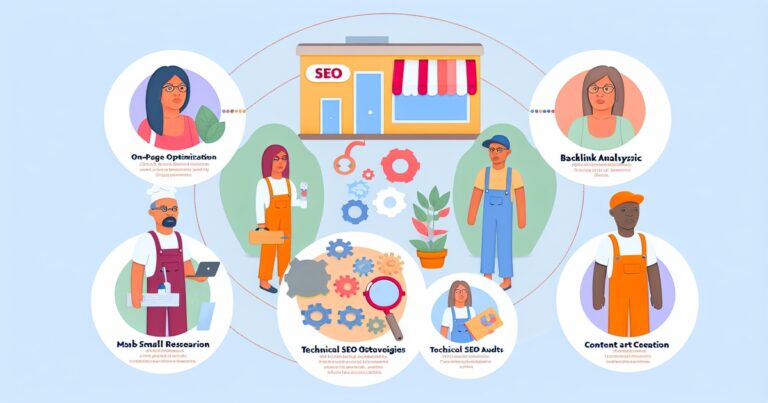The Power of Networking and Building Relationships in the Design Industry
Networking and building relationships are essential aspects of success in any industry, but particularly in the design industry. As a designer, you need to connect with other professionals, vendors, suppliers, and clients to build a strong network that supports your growth and development. Whether you are just starting or are an experienced designer, creating meaningful connections with others can help you to advance your career.
The Importance of Networking and Building Relationships
Networking is about developing relationships that can offer value to both parties involved. It is a way to establish trust that can lead to business opportunities or potential collaborations.
In the design industry, networking provides creators with opportunities for business growth, job opportunities or potential project partnerships. Building relationships has many advantages as well.
Strong connections within the design industry will provide valuable support from other professionals who have similar goals. These professional connections can offer advice or guidance on new design trends as well as personal development tips.
The Benefits of Networking and Relationship-Building
Networking opens up doors for new opportunities by providing access to people who have similar interests or work in related fields; this also leads to increased visibility within the industry which could lead to more work offers than you would get otherwise. The opportunity for collaboration is another benefit of networking; through it designers can find partners who complement their skills set. Building relationships will increase credibility among peers thus increasing your chances of success.
A strong network also provides emotional support from professionals with shared experiences. Additionally, relationship-building helps cultivate strong communication skills which are essential in a profession like design where communication is vital for successful projects.
Networking and building meaningful professional relationships are critical components of becoming a successful designer within the industry today – they bridge gaps between designers providing mutual benefits, and help establish strong reputations within the industry. Next, we will delve into the specifics of networking in design and how to approach building relationships through these channels.
Understanding Networking in the Design Industry
Defining networking in the design industry
Networking is simply defined as the process of forming relationships with other professionals or individuals to exchange information, opportunities, and advice. In the design industry, networking is key to building long-term relationships with clients, colleagues, and peers.
It involves meeting new people, engaging in conversations, and sharing knowledge. Networking can happen anywhere – from attending industry events and conferences to participating in online forums or social media groups.
Types of networking events and opportunities
There are several types of networking events that are relevant for designers such as trade shows, conferences, seminars and workshops. Attending these events provides an opportunity for designers to showcase their work and engage with potential clients or partners. Additionally, local meet-ups organized by professional associations or informal groups help designers meet like-minded professionals who share common interests.
In recent years digital networking has become increasingly popular through platforms like LinkedIn and Instagram which provide a space for designers to showcase their portfolio work while connecting with potential clients. Social media platforms have become an indispensable tool for networking as they make it easy to connect directly with other professionals.
Tips for successful networking
Successful networking requires a lot more than just showing up at an event or making new contacts online. It takes time and effort to build meaningful relationships that will last beyond a single meeting or interaction. Here are some tips on how you can achieve success in your networking endeavors:
1. Be prepared: Before attending any event do some research on attendees so that you know what they do & how best you can connect with them. 2. Be authentic: People want to connect with someone who is genuine and sincere about what they do.
3. Listen more than you talk: Listen actively when engaging in conversation so that you can understand the other person’s perspective. 4. Follow up: Send a follow-up email or message after meeting someone new to express your gratitude for their time & to continue the conversation.
5. Be persistent: Networking takes time so it’s essential to continue nurturing relationships over time. By following these tips, you can build meaningful relationships that will benefit you both personally and professionally in the long run.
Building Relationships with Clients
Importance of Building Strong Relationships with Clients
In the design industry, building strong relationships with clients is essential to success. A client who feels that their designer understands their business and shares their vision is much more likely to return for future projects and recommend the designer to others.
Additionally, a good client relationship can lead to increased creativity and better results. When the designer and client trust each other, there is room for experimentation and collaboration which can result in superior designs.
Strategies for Building Strong Client Relationships
One way to start building a strong relationship with a client is by taking the time to get to know them. Ask them questions about their business, goals, challenges, and vision for the project. Listen actively and demonstrate an interest in their needs.
This will show the client that you care about them as individuals and not just as another project. Another strategy is setting clear expectations from the beginning of a project.
Work together with your client to create a timeline that works for both parties. Be transparent about your process, what they should expect from you at different stages of the project and how long it will take.
Providing excellent customer service can go a long way in building strong relationships with clients. Be prompt in answering emails or calls, be available when needed, be clear in all communication related to design decisions or changes made during projects.
How to Maintain Client Relationships Over Time
Maintaining strong client relationships depends on several factors including consistent communication throughout projects (and after), timely delivery of work promised, paying attention to details relevant only (such as color schemes), recognizing important milestones within their business (like anniversaries or product launches) as well as nurturing genuine friendships outside of professional obligations. It’s also important to regularly follow up after completing a project- either through thank you notes, holiday cards or periodic check-ins.
Going the extra mile to show care and appreciation for clients can go a long way in keeping them coming back for future projects. By providing great service, clear communication, and being available when needed post-project, you’ll be able to nurture these important relationships over time.
Building Relationships with Colleagues and Peers
The Benefits of Building Relationships with Colleagues and Peers
While building relationships with clients is crucial, it’s equally as important to build strong professional relationships with your colleagues and peers in the design industry. By cultivating these relationships, you’ll have access to a network of supportive individuals who share your passion for design.
This can lead to new opportunities, collaborations, referrals, and even friendships. Additionally, by building strong professional relationships with your colleagues and peers, you’ll be able to learn from their experiences in the industry.
You can gain valuable insights into trends in the market or new techniques or tools that could improve your workflow. Ultimately, this will help you grow as a designer and achieve greater success in your career.
Strategies for Building Strong Professional Relationships
One of the best ways to build strong professional relationships with your colleagues and peers is by attending networking events specific to the design industry. This will give you the opportunity to meet other designers face-to-face and learn more about their work.
Don’t be afraid to strike up a conversation or exchange contact information. Another strategy is to collaborate on projects whenever possible.
This allows you to showcase each other’s skills while also building trust between team members. Working together towards a common goal fosters a sense of community within the industry that can lead to lasting professional relationships.
Make an effort to support your colleagues’ work outside of collaboration opportunities. Engage on social media platforms like Instagram or Twitter where designers share their portfolios or news about projects they’re working on – these platforms provide easy ways for designers interact and share feedback that starts long-term conversations.
Maintaining Professional Relationships Over Time
Maintaining professional relationships requires consistent communication but doesn’t have needs require daily check-ins – instead think about regularly scheduling time once every 2-3 months to check in with former colleagues or collaborators. You could schedule a phone call or meet up over coffee, which will keep the relationship alive and build trust over time. You can also maintain relationships digitally by engaging in social media conversations or sending periodic emails to stay updated.
A great way to make sure your professional contacts know you’re still invested in their work is by sharing an article, project, or even something personal that reminded you of them. Building these relationships is not about using people for your own gain but about having a mutual respect and admiration for each other’s skills and staying on top of the industry together.
Navigating Social Media for Networking and Relationship-Building
Overview of social media platforms used in the design industry
Social media has become a crucial tool for networking and building relationships in the design industry. There are various platforms available, but some are more prominent than others. LinkedIn is one of the most commonly used social media platforms for professional networking in the design industry.
It allows users to connect with other professionals, join groups related to different aspects of design, and share their work experience and career goals. Another platform that’s popular among creatives is Instagram.
By following relevant hashtags, designers can discover new trends, connect with influencers or potential clients, showcase their work, and develop their brand identity. Twitter is another platform that designers often use to stay up-to-date with industry news and connect with other professionals.
Tips for using social media to network and build relationships
While social media can be a powerful tool for networking and building relationships in the design industry, it’s important to use it effectively. Here are some tips:
1. Be authentic: Share your real self on social media; don’t just try to sell yourself or your business. 2. Engage with others: Like, comment on or share other people’s posts instead of just posting your own content.
3. Keep it professional: While it’s okay to show your personality on social media if you’re using it for professional purposes keep things professional. 4. Share valuable content: Share content that will be useful or interesting to your target audience.
Best practices for maintaining a professional online presence
Maintaining a professional online presence is essential when using social media as a networking tool in the design industry. Here are some best practices: 1. Consistency: Use the same profile picture across all platforms so that people can easily identify you online.
2. Use a professional bio: Use your bio to describe who you are, what you do, and any relevant experience or accomplishments. 3. Keep it up-to-date: Keep your social media profiles up-to-date with accurate information and new work samples.
4. Monitor engagement: Pay attention to comments and messages you receive on social media so that you can respond quickly and professionally. By following these tips for using social media to network and maintain a professional online presence, designers can connect with other professionals in the industry, showcase their work and build lasting relationships with potential clients or peers.
Conclusion
A Recap on why networking and relationship-building is crucial in the design industry
Networking and building relationships are essential components of success in the design industry. As we’ve explored, networking allows designers to connect with potential clients and colleagues, build a reputation for themselves, gain new business opportunities, and stay up-to-date with industry trends. Building strong relationships with clients and other professionals can lead to repeat business and referrals, which are invaluable in a competitive field like design.
In addition to these practical benefits, networking and relationship-building can also provide emotional support for designers by creating a sense of community and helping them feel less isolated. By attending events or interacting with others in the industry online, designers can share ideas, get feedback on their work, learn from others’ experiences, and build lasting friendships.
Final thoughts on how to successfully network and build strong professional relationships
Successfully networking in the design industry requires more than just showing up at events or sending out cold emails – it requires intentional effort to build genuine connections with others. Here are some final tips for successful networking: 1. Be authentic: Focus on building real connections rather than just trying to sell yourself or your services.
2. Follow up: After meeting someone new at an event or online, be sure to follow up with them within a few days. 3. Give back: Offer your expertise or resources to others whenever possible – it may lead to future opportunities or collaborations.
When it comes to building strong professional relationships in the design industry, communication is key. Be responsive to clients’ needs and concerns, communicate clearly about deadlines and expectations, listen actively when receiving feedback from clients or colleagues, and always maintain a high level of professionalism.
While networking may not come naturally for everyone – particularly introverted designers – it’s an essential part of building a successful career in the design industry. By embracing networking opportunities and building strong relationships with clients and colleagues, designers can position themselves for long-term success in a competitive field.









